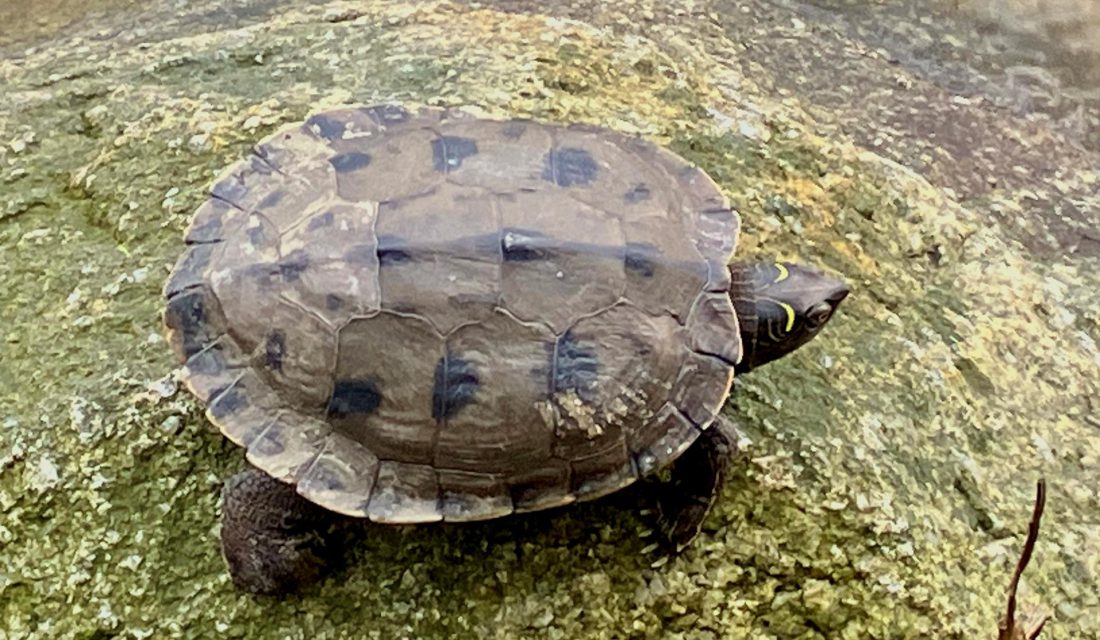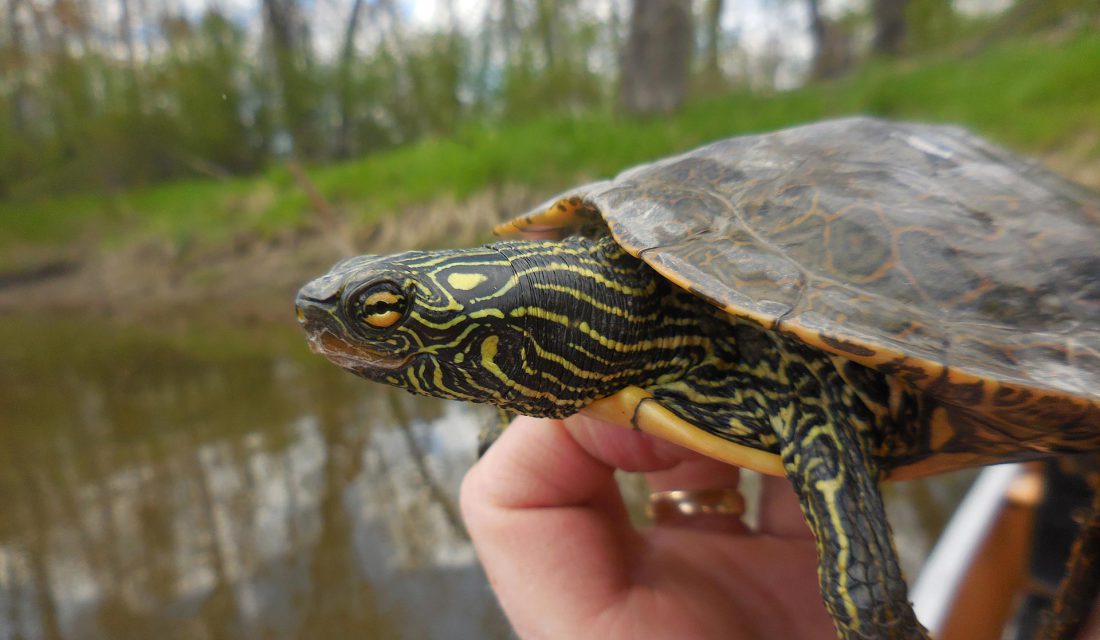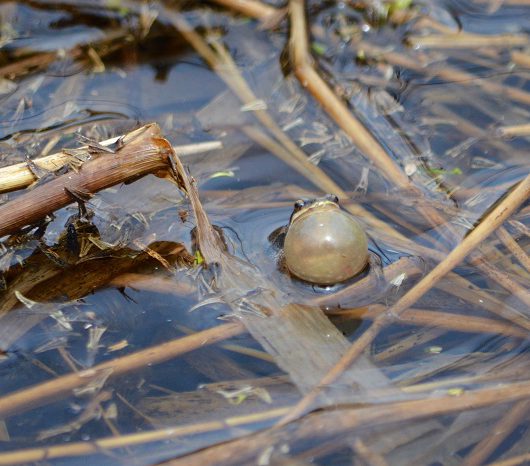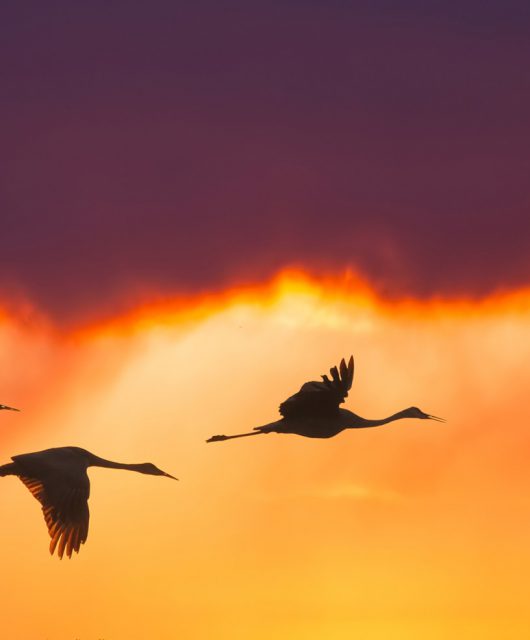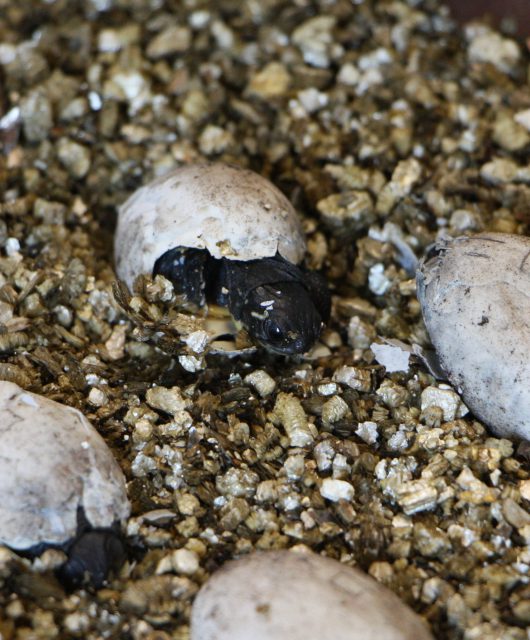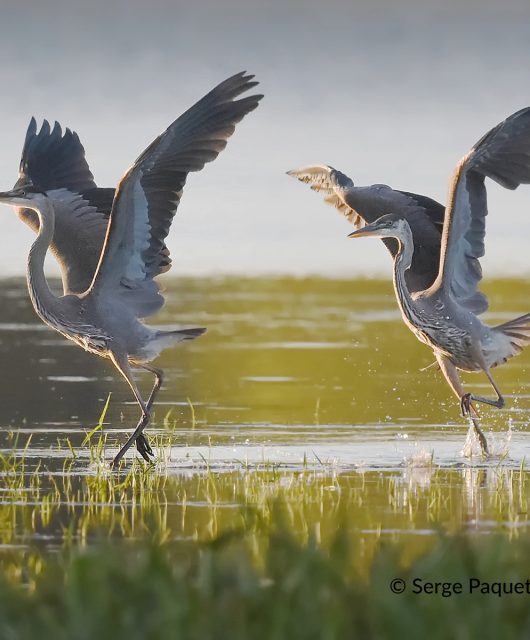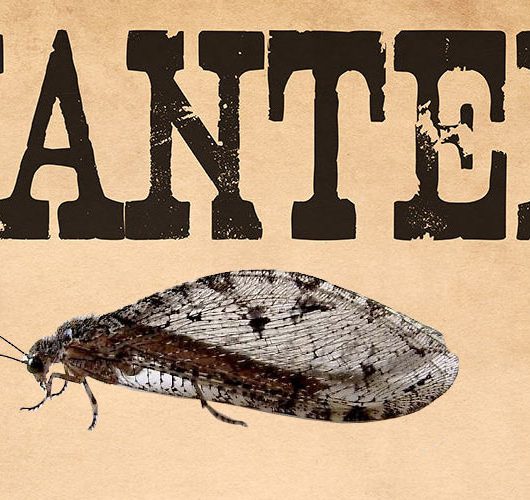Introducing…the False Map Turtle!
Canada is home to eight native species of freshwater turtles. Recently, however, another kind of turtle has been showing up in Canadian waters – the False Map Turtle, which is native to the United States.
The False Map Turtle is about the same size and has a similar patterning as the Northern Map Turtle, a native species. The most obvious difference between the two species is the False Map Turtle has a bold, curved mark near the eye (an “eyebrow”), while the Northern Map Turtle tends to have a bright spot behind the eye.
The False Map Turtle is becoming more common in the pet trade and turtles purchased as pets often end up getting released into the wild for a few reasons, including that turtles can live for decades and their owner may eventually be unable to care for the turtle. In addition, that cute little hatchling the size of a Loonie when purchased, will continue to grow and grow and require a much larger aquarium, making it difficult to care for.
To find out how widespread the False Map Turtle is in Canada, we used data from iNaturalist Canada, a community science project to document native and non-native species in Canada. To our surprise, False Map Turtles have been reported in three provinces and eight cities: from Nanaimo, BC in the west to Quebec City in the east. False Map Turtles were observed in five different locations in Toronto, highlighting how widespread the releases have been. While most observations are from the last few years, the earliest record on iNaturalist dates back to 2014 in Victoria, BC.
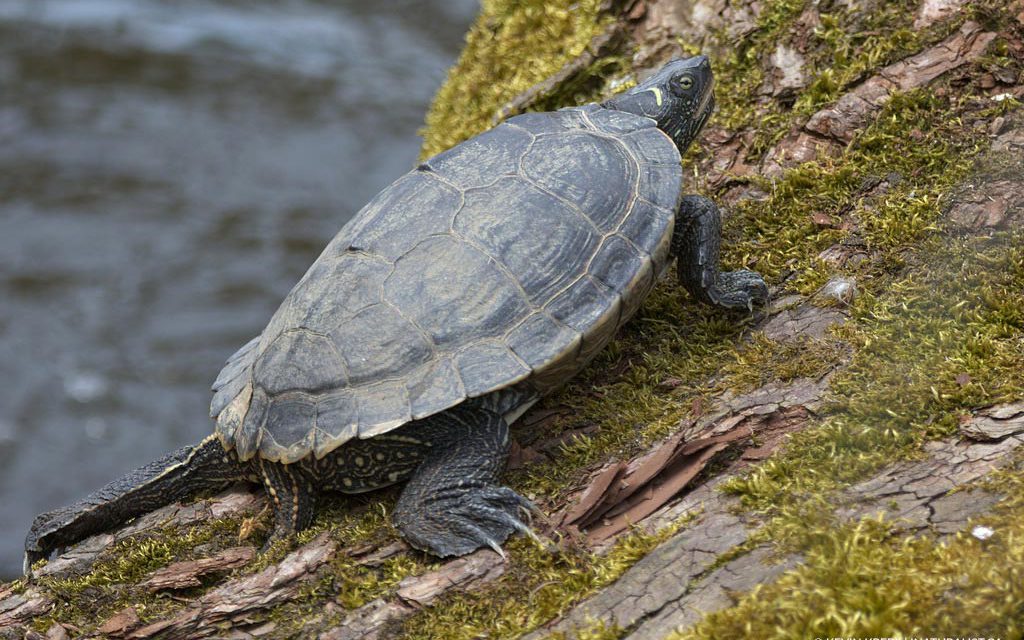
In their native range, the False Map Turtle occurs as far north as Minnesota. Given how close the species gets to Canada, we wondered if they might be able to successfully breed in Canada. Looking at climate data, we found that the summer temperature in Windsor, Toronto and even Ottawa can be warmer than the average temperature in Minneapolis, Minnesota. These temperatures suggest that at least during the warmest summers, False Map Turtle eggs could successfully hatch out across much of southern Ontario. There don’t appear to be many False Map Turtles in the wild, so successful breeding is unlikely, at least for now. If the number of releases into the wild increases, then successful reproduction may be more likely in the future.
What other risks does another exotic turtle species in Canada pose? It is possible that False Map Turtles could breed with Northern Maps producing hybrid offspring that may be less adapted to Canada. The biggest risk is the spread of disease. Hatchling turtles in the pet trade are often kept in crowded conditions, increasing the risk of disease. Turtles may carry a virus for years and if released into the wild that virus could be harmful to native turtles or other species. The odds of a disease outbreak from a released pet turtle may be low but the more turtles released into the wild the greater the risk. Check out our full paper to find out more about False Map Turtles in Canada.
If you have a pet turtle you can no longer care for, please do not release it into the wild:
- Try looking online for someone willing to adopt it.
- Reach out to local pet stores to see if they know people interested in turtles.
- Check for local reptile clubs to reach people who may be interested in adopting a pet turtle.
- Contact nature centres in your area to see if they might be willing to accept the turtle to put on display.
It can be hard to find a home for a large, adult turtle, but it is worth taking the effort to help protect our native wildlife.

